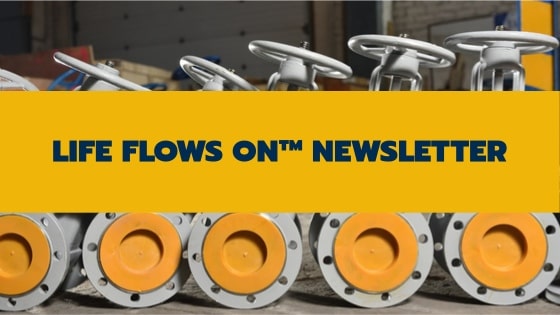Everything You Need to Know About How Electric and Pneumatic Valve Actuators Operate
From 2019 to 2024 the actuator market is expected to have a CAGR of 8.6%. Actuators are growing in popularity every year as companies have a higher demand for them.
You might be thinking to yourself that you’re ready to hop onto the actuator bandwagon. Yet, you may not realize there are different types of actuators.
Keeping this in mind, you want to make sure you’re buying the actuator that is best suited for your needs. In this article, we’ll delve deeper into electric and pneumatic valve actuators.
What is a Valve Actuator?
A valve actuator acts as the power source for a valve. The actuator will turn energy into motion either manually or automatically. Depending on the type of actuator you have will dictate what energy source you use.
Automatic actuators are the most common types of actuators people use. There are three different types of power sources, electric, pneumatic, and hydraulic. Below we’ll focus on pneumatic and electric valves.
Pneumatic Valve Actuators
Pneumatic valve actuators use compressed air or gas to create motion. They can use either linear or rotary motion to create energy.
Pneumatic valves have a quick response time making them ideal for main engine controls. Common uses for pneumatic valves are ventilation systems, pumps, and internal combustion engines.
Industries that tend to use pneumatic valves include:
- Medical
- Packaging
- Material handling
- Entertainment
- Robotics
Pneumatic valves are large and loud so make sure you have adequate space to fit them, and you can put them somewhere you don’t mind the noise.
Electric Valve Actuators
Electric valve actuators have electric motors that create electrical energy. The energy is used to create mechanical torque. The electric actuator can be operated using either solenoid, magnetic, or motor-driven actuators.
Electric actuators are perfect for engines and heavy equipment. You’ll see them used most often for excavation and construction equipment. For example, excavators, dump trucks, and forklifts.
If you have a smaller space or need a quieter actuator, electric actuators are the way to go.
Key Differences Between Electric and Pneumatic Valves
There are many factors that differentiate which type of valve you’ll want to use. For example, electric valves tend to have higher levels of precision. On the other hand, pneumatic valves are easier to maintain.
Below we’ll look at a few more key factors that will determine which type is right for you.
Speed and Force
Pneumatic actuators have more options when it comes to the force and speed of the valves. These valves can better regulate the mechanism.
A variable orifice can be added if you want even better control over the speed. The amount of force can be regulated by using pressure relief valves or flow regulators.
You can’t control the speed and force of an electric actuator unless you change the gears. This means if you need more control, pneumatic actuators are the way to go.
Costs
Pneumatic actuators have lower component costs than electric actuators. However, the operating and maintenance costs of pneumatic actuators are much higher.
Depending on how often you’re using the machine, and if you’re regularly maintaining it, can play a large role in which you’ll choose.
Temperature Range
Pneumatic actuators can operate at temperatures between -4 to 175°F. These temperatures can be extended to -40 to 250°F. Electric actuators can handle temperatures between -40 to 150°F.
Electric actuators are more likely to overheat as they have a smaller temperature range. Moreover, pneumatic actuators are more resistant to moisture whereas electric actuators need to avoid moisture at all costs. What’s more, if moisture builds up and it is cold outside, the moisture inside the electric actuator could freeze up and block the air from flowing through the machine.
You may need to install a heater and a thermostat if you’re going to use an electric actuator outside. This will allow you to monitor the temperature of the motor and keep moisture from building up.
Stalling
Pneumatic actuators can be stalled if necessary, you won’t have to worry about them overheating. Electric actuators should never be stalled as the motor can be damaged. Switches and sensors are installed in the electric actuator to help prevent stalling.
Duty Cycle
Pneumatic actuators can operate continually with a 100% duty cycle motor. Typically, electric actuators use 25% duty cycle motors. The motor needs more breaks with an electric actuator.
NEMA Guidelines
The National Electrical Manufacturers Association (NEMA) has guidelines on how electric actuators should be installed and/or constructed in hazardous areas. If you’re working in a hazardous area, pneumatic actuators might be better as they were created to be explosive proof. This makes them more cost-effective and safer to use.
Spring Return
A spring return on an actuator helps open and close the valves. It’s a fail-safe mechanism if there is a power and/or signal failure. This spring return will place the valve in a pre-determined safe position.
This feature is a standard option (or at least an added option) for pneumatic actuators. Electric actuators don’t tend to have a spring return function. If you purchase an electric actuator, you may be able to get a battery backup system as a possible fail-safe.
Which Actuator Do You Need?
There are pros and cons to purchasing either an electric or pneumatic valve. Hopefully, this guide has helped you figure out which type of actuator is best suited for your needs. There are even more types of actuators if you find these don’t quite fit what you’re looking for, you can even get hybrid actuators!
Reach out to us today if you have any questions.


